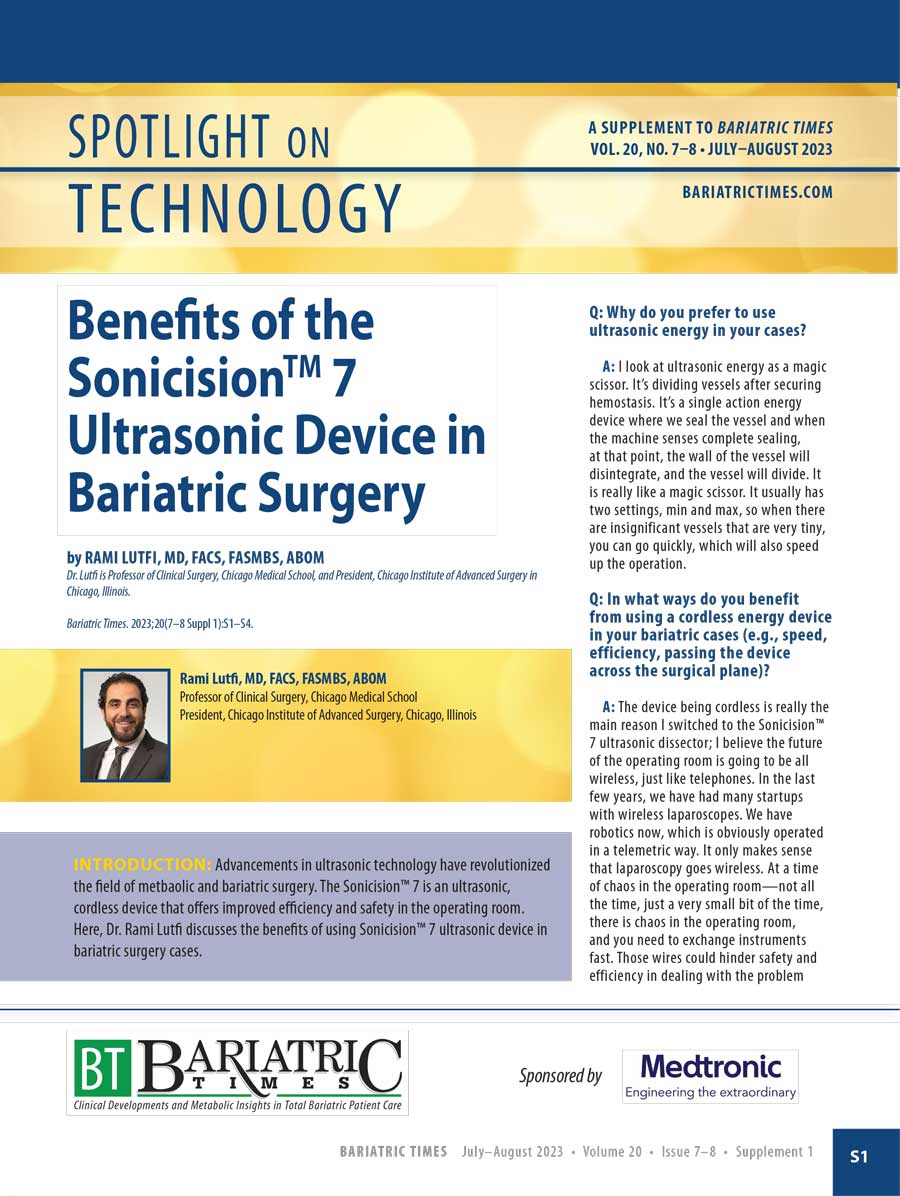A Clinician’s Guide to Motivational Interviewing

by Pranjali Sharma, MD, FAPCR, FEAA
Dr. Sharma is an American Board-Certified Internist and Endocrinologist, practicing as an Endocrinologist at Parkview Health System in Pueblo, Colorado. She is an accomplished clinician-educator and researcher with multiple peer-reviewed publications and leadership roles in national organizations, including The Obesity Medicine Association. She serves on the peer-review boards of over 20 journals in the field of endocrinology, internal medicine and obesity management. She is passionate about combating obesity through an integrated approach of education, lifestyle counseling, and pharmacotherapy. She is an avid hiker and adventure-seeker!
Funding: No funding was provided.
Disclosures: The author has no conflicts of interest relevant to the contents of this article.
Bariatric Times. 2023;20(1):24.
Behavioral modification is a key pillar of obesity management, but how can clinicians encourage meaningful, sustainable change in their patients’ behavior? Motivational interviewing (MI) is a conversation tool that fosters effective, collaborative interactions between patients and doctors. The clinician shifts to a supportive, backseat role, which empowers the patient to take control of their care and focus on their goals. By cultivating an environment that encourages the patient to become an active participant in their health, the clinician motivates the patient to identify problems and potential obstacles, then drive toward change.
What is MI? MI is not a way to coerce patients into behavioral changes. Instead, it is a strategic approach that unearths the patient’s motivations for change and sparks personal autonomy into action. Unlike many aspects of practicing medicine, MI can’t be learned mathematically. It takes time and evolves with every patient interaction. Just as each patient has unique needs and motivators, clinicians must be able to adapt their MI style to collaborate with the individual patient effectively.
How does MI drive behavioral change? MI’s biggest strength is its departure from traditional medical practices. It isn’t a protocol for a patient to follow or a medication to take; it is a collaborative process wherein the clinician and patient work together to evaluate the patient’s readiness, ability, and motivation to embrace change.
By using empathetic listening to hear the patient’s perspective, the clinician supports the patient as they look inward to explore their problems and have a conversation about solutions. Personal buy-in cements plans for long-term behavioral change. For example, if a patient can personally justify the benefits of walking one mile every day, they are more likely to stay committed to that goal. If their doctor tells them in a didactic manner why they need to walk one mile per day, they are less likely to follow through.
What are some core skills when practicing MI? The core skills of MI are built around the acronym OARS, which stands for:
- Open-ended questions: These allow the patient to convey more information and stay engaged without feeling limited to “yes” or “no” answers.
- Affirmations: Praising the patient’s insights or behaviors validates the patient, builds rapport and trust, and deepens the change conversation.
- Reflective listening: This two-part skill involves listening and understanding the meaning of what the patient is saying and reflecting on it in the form of a statement rather than a question. Reflective listening strengthens the therapeutic relationship and promotes change.
- Summaries: Periodically summarizing the discussion keeps the conversation moving forward, while showing that the clinician was listening.
What are the pros and cons of MI? As with any clinical tactic, understanding the benefits and possible drawbacks is critical to effectively implementing MI in your practice.
When used as part of a weight management plan, MI has the potential to increase the patient’s participation in their treatment, leading to more consistent and long-term changes; increase the patient’s self-confidence as they become self-reliant; help patients discover their solutions; avoid confrontation and promote positivity in the doctor–patient relationship; and help clinicians gain confidence in their communication and education skills.
Clinicians need to be aware that MI is not a quick fix. It’s also important to remember 1.) This approach is more successful with patients who have regular follow-ups. 2.) MI conversations are sometimes difficult and uncomfortable, and patients and clinicians must be willing to navigate these discussions together. 3.) MI is not a one-size-fits-all technique, and it must be adjusted to the individual patient.
Engaging in these vital discussions doesn’t just benefit patients; it is an essential reminder of why we work in healthcare. When we see our patients for who they are, on an individual level, it can re-energize our dedication to improving our patients’ lives, one conversation at a time.
Resources to enhance your clinical practice. If you are interested in additional information on MI or other obesity management strategies, the Obesity Medicine Association (OMA) is the largest network of healthcare providers dedicated to treating obesity. OMA is a valuable resource for healthcare professionals across all specialties. Join OMA to gain access to a vast array of information on this crucial topic.
Category: Medical Methods in Obesity Treatment, Past Articles




